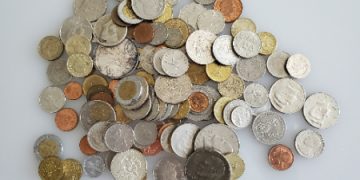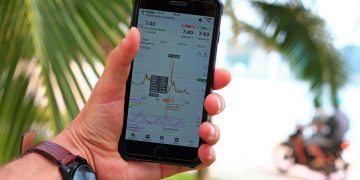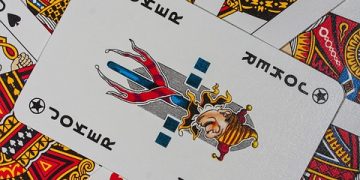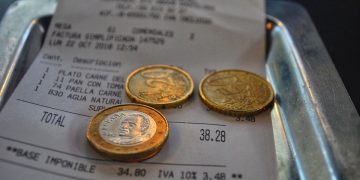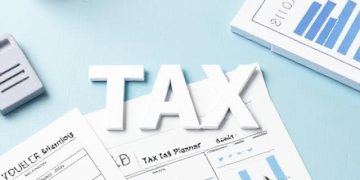When I first decided to take control of my money, I did what most people do—I downloaded the first budgeting app that popped up in the app store. But after a few weeks of confusing categories and missed transactions, I gave up. It wasn’t until I found a budgeting app that actually matched my lifestyle and goals that things started to click.
Today, budgeting apps are more than just expense trackers—they’re powerful personal finance tools that help you stay organized, build savings, pay down debt, and plan for the future. With so many options available, finding the right one can make all the difference between financial stress and confidence.
In this guide, we’ll explore the best budgeting apps on the market right now. You’ll get clear comparisons, expert picks, and insights on which app works best depending on your lifestyle, goals, and how hands-on you want to be with your budget.
What to Look for in the Best Budgeting Apps
Not all budgeting apps are created equal. Before downloading just anything, here are the most important features and differences to consider when choosing the right one:
Key Features to Compare
Look for core money management tools like:
Bank syncing to automate expense tracking
Goal tracking for savings, debt, or big purchases
Spending categorization and alerts to help reduce overspending
Automation, so you spend less time on manual data entry and more time reaching your financial goals
💸 Free vs. Paid Versions: Which Offers Better Value?
While free apps like Mint offer great basic features, paid apps like YNAB and Monarch Money provide deeper customization, long-term planning, and more detailed reporting. If you’re serious about mastering your finances, a premium version may be well worth the small monthly fee.
📱 User Experience, Mobile Compatibility & Support
A great budget tracker app should be easy to navigate, visually clear, and accessible across all your devices. Look for apps that offer:
Clean, intuitive interfaces
Real-time mobile syncing
Responsive customer support and financial education tools
Top 7 Best Budgeting Apps To Consider In 2025

If you’re ready to take control of your finances, one of these top budgeting apps could be the perfect starting point. Each one brings something unique to the table, depending on your budgeting style, financial goals, and how hands-on you want to be with your money.
1. YNAB (You Need A Budget) — Best for Zero-Based Budgeting
Features:
YNAB is all about giving every dollar a job. It uses the zero-based budgeting method to help you allocate your income with precision. You can set financial goals, sync your bank accounts, track real-time spending, and monitor your progress through easy-to-use dashboards.
Pros:
Goal-based planning tools
Powerful reporting and forecasting features
Encourages intentional money habits
Cons:
Steeper learning curve for beginners
No free plan available
Pricing:
$14.99/month or $99/year (with a 34-day free trial)
Best For:
Hands-on budgeters who want full control, long-term vision, and strategic money planning.
2. Mint — Best Free Budgeting App for Everyday Users
Features:
Mint automatically tracks your expenses, categorizes spending, reminds you of bill due dates, and even monitors your credit score. It’s one of the most well-known free personal finance apps.
Pros:
Completely free to use
Easy-to-read dashboards and visual summaries
Connects to nearly every bank and credit card
Cons:
Ads and product recommendations
Limited customization compared to paid apps
Pricing:
Free
Best For:
Beginners who want basic budgeting tools, automatic tracking, and a simple all-in-one view of their finances.
3. EveryDollar — Best for Simplicity and Dave Ramsey Fans
Features:
Created by the Ramsey Solutions team, EveryDollar is a clean, intuitive zero-based budgeting app that guides you through monthly planning and tracks your expenses manually or automatically (with the paid version).
Pros:
Easy for beginners to use
Faith-based financial approach (optional)
Syncs with Financial Peace University tools
Cons:
Limited features in the free version
Less suitable for complex budgeting needs
Pricing:
Free basic version; Premium starts at $79.99/year
Best For:
Fans of the Dave Ramsey method and users who want a straightforward, faith-driven budgeting system.
4. Goodbudget — Best Envelope Budgeting App
Features:
Goodbudget modernizes the classic envelope system by allowing you to assign your income into digital “envelopes” for each category. Great for those who want to stay disciplined with spending.
Pros:
Shared budgeting for couples or families
Encourages mindful spending
Syncs across devices
Cons:
No bank syncing (manual entry required)
Fewer features compared to other apps
Pricing:
Free basic plan; $8/month or $70/year for Plus
Best For:
Couples or families who love envelope budgeting and want a shared, intentional approach.
5. PocketGuard — Best for Overspending Control
Features:
PocketGuard makes it easy to see how much you can safely spend by showing what’s left “In My Pocket” after accounting for bills, goals, and subscriptions. It’s a spending tracker app that helps curb bad habits.
Pros:
Automatically tracks recurring expenses
Helps identify unnecessary subscriptions
Clean, user-friendly interface
Cons:
Limited customization in the free version
No investment tracking features
Pricing:
Free version available; PocketGuard Plus starts at $7.99/month or $79.99/year
Best For:
Anyone who struggles with overspending and wants help making smarter day-to-day decisions.
6. Monarch Money — Best for All-in-One Financial Planning
Features:
Monarch Money combines budgeting, goal tracking, and investment management in one sleek platform. It allows multiple users to manage finances together, making it a top choice for couples and busy professionals.
Pros:
Modern, clean design
Investment tracking included
Collaborative budgeting
Cons:
No free plan
Still growing in popularity
Pricing:
$14.99/month or $99.99/year
Best For:
Couples or professionals looking for a visually appealing, comprehensive money management app that covers budgeting, saving, and investing.
7. Empower (formerly Personal Capital) — Best for High-Income Users
Features:
Empower blends budgeting tools with wealth management features. It tracks spending, calculates net worth, monitors investments, and even offers access to financial advisors.
Pros:
Great for tracking investments and net worth
Advanced retirement planning tools
Free version with robust features
Cons:
Overkill for casual users
Advisory services have high account minimums
Pricing:
Free financial tools; advisory services require $100K+ in assets
Best For:
High-income individuals who want both day-to-day budgeting and long-term financial planning in one app.
Comparison Table: Budgeting App Features, Pricing & Best Use Cases
| App Name | Best For | Key Features | Free Plan | Paid Plan | Ideal User |
|---|---|---|---|---|---|
| YNAB | Zero-Based Budgeting | Goal tracking, real-time syncing, spending plans | ❌ | $14.99/month or $99/year | Hands-on users who want full control and planning |
| Mint | Free Budgeting & Expense Tracking | Automatic syncing, bill tracking, credit monitoring | ✅ | N/A | Beginners looking for all-in-one free tools |
| EveryDollar | Simplicity & Dave Ramsey Method | Guided planning, zero-based budgeting, FPU integration | ✅ | $79.99/year | Fans of Ramsey’s method and structured plans |
| Goodbudget | Envelope Budgeting | Digital envelopes, shared budgeting, manual entry | ✅ | $8/month or $70/year | Couples or families using envelope-style budgeting |
| PocketGuard | Overspending Control | “In My Pocket” limits, recurring expense tracking | ✅ | $7.99/month or $79.99/year | Users needing help with day-to-day spending control |
| Monarch Money | All-in-One Financial Planning | Budgeting, investment tracking, shared access | ❌ | $14.99/month or $99.99/year | Couples and professionals managing finances together |
| Empower | High-Income & Wealth Management | Net worth tracking, retirement tools, investments | ✅ | Advisory services for $100K+ assets | High earners seeking budgeting + wealth insights |
How to Choose the Right Budgeting App for You
The best budgeting app isn’t just the most popular—it’s the one that fits your lifestyle, spending habits, and personal finance goals. Start by thinking about what you want your app to help you achieve. Do you need help tracking expenses, saving money, paying off debt, or just staying organized?
If you’re a beginner, you may want an app with a clean interface and basic budgeting features—something like Mint or EveryDollar. Couples might prefer a shared platform like Monarch Money or Goodbudget, while freelancers or investors might lean toward all-in-one financial planning tools like Empower or YNAB.
Most of the best budgeting apps offer free trials, and some have refund policies—so take advantage of those to test a few options. You’ll know you’ve found the right app when it feels intuitive and keeps you engaged week after week.
Frequently Asked Questions

Are free budgeting apps worth it?
Yes. Free budgeting apps like Mint and Goodbudget are great for beginners who want to get started with money management without spending a dime. While they may lack advanced features, they still provide essential tools like expense tracking and goal setting. For more control, premium apps offer deeper customization and automation.
Can budgeting apps help reduce debt?
Definitely. Many budgeting apps include built-in debt tracking features, such as payoff calculators, interest monitoring, and payment reminders. Apps like YNAB and PocketGuard help users allocate funds toward debt using structured plans. These tools promote accountability and give you a clear picture of your progress toward becoming debt-free.
Are these apps safe to connect to my bank account?
Yes, most leading budget tracker apps use bank-grade encryption and read-only data access. This means they can view your transactions but can’t move money or make changes. Brands like YNAB, Mint, and Monarch Money prioritize security, often using multi-factor authentication to protect your personal and financial information.
What is the #1 budgeting app?
The top budgeting app depends on your needs. However, YNAB (You Need A Budget) is frequently rated the best overall for its zero-based budgeting approach, robust features, and commitment to financial education. It’s perfect for users who want total control over their spending, savings, and long-term financial planning.
Is Mint still a good budget app?
Mint remains one of the most widely used free budgeting apps, offering automatic transaction syncing, spending categorization, and credit score monitoring. However, some users feel it’s outdated, cluttered with ads, and lacks customization. It’s still a solid entry point, but other modern tools may offer a better experience.
What is replacing Intuit Mint?
Intuit is shifting focus to Credit Karma, but many former Mint users are switching to alternatives like YNAB, Monarch Money, or PocketGuard. These apps offer more modern interfaces, better support for goal tracking, and deeper personalization—making them excellent replacements for those wanting a more comprehensive budgeting solution.
Why is YNAB better than Mint?
YNAB offers hands-on budgeting strategies, educational support, and real-time control through zero-based planning. Unlike Mint, which is largely automated, YNAB encourages users to be intentional with every dollar. It also offers better goal tracking, proactive saving tools, and minimal distractions—making it ideal for serious money management.
Take Control of Your Money with the Best Budgeting Apps
Each of these apps brings something unique to the table. Whether you’re new to budgeting or ready to level up your money management game, the right tool can help you save more, spend smarter, and ultimately master your finances.
Explore a few apps that stood out to you in this guide, take advantage of free trials, and commit to the one that fits your needs best. With the right app in your pocket, financial clarity is just a few taps away.
Start mastering your money today with one of these top-rated budgeting apps—and take the first step toward financial peace of mind.
Have you tried any of these apps? Got a favorite? Leave a comment below and share your experience—we’d love to hear your story.






